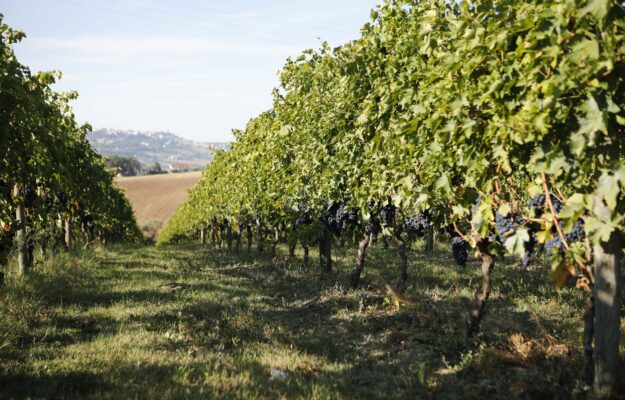It experienced an initial moment of confrontation in the Chamber of Deputies, in the Agriculture Commission, the “Montepulciano” querelle, with an informal hearing that saw representatives from Abruzzo, Marche, Molise and Puglia at the table. Where, basically, there were no breakthroughs, but each reiterated its thinking, with Abruzzo wanting exclusively the use of Montepulciano, and for the others the synonymous Cordisco, recently reintroduced in the register of vine varieties by decree of the Ministry of Agriculture.
If the president of the Consorzio Vini d’Abruzzo, Alessandro Nicodemi, pointed out that in Italy, for the past 50 years, there have been “appellations “of terroir”, such as Barolo, which are widely protected, those of “grape variety”, such as Montepulciano d’Abruzzo, must also have equal dignity and be protected. Montepulciano d’Abruzzo is an appellation we have been investing in for years, it is the second red wine appellation after Chianti, a pillar of national enology, and Montepulciano is now a commercial brand that is coveted by many”, Nicodemi said, citing examples of Montepulciano wines, but not from Abruzzo, advertised in various e-commerce portals. And, according to Nicodemi, opening up the use of Montepulciano “which today is armored under the umbrella of Abruzzo and Tuscany (where the reference is to the appellation of Montepulciano, the land of Vino Nobile) we would go against the goal of the dm labeling, which is to better inform consumers, when instead it would be easier to confuse. Moreover, we also suffer the Montepulciano issue in Abruzzo, where for example we cannot write Montepulciano on the label of Cerasuolo d’Abruzzo, which is the third wine for us, we are talking about 15/18 million bottles. Now we can use Cordisco as well, instead of red grapes. And while it is true that it is an obsolete term today, it will slowly come back into circulation. I don’t see anything shocking in allowing everyone to use Cordisco, and only Abruzzi producers to use Montepulciano d’Abruzzo”.
They remain opposed to the idea, however, the other regions involved, starting, above all, with Marche, where Montepulciano is the ampelographic mainstay of wines such as Rosso Conero and Rosso Piceno. “It would be unfair if each territory reserved a grape variety for itself, preventing other producers from transparent communication to consumers. It is even more so for a grape variety such as Montepulciano”, said Michele Bernetti, president of the Istituto Marchigiano di Tutela Vini (Imt), “which, in Italy, has 35,000 hectares under cultivation, 2,900 of which are in the Marche alone. The impasse over a decree that reforms several aspects of our sector significantly is evident: an effort of responsibility is needed from all the actors involved to find a common line, capable of urgently unblocking the situation. For this reason”, Bernetti concluded, “we express our availability to our colleagues from Abruzzo, but also to all the other regions involved, to work together toward a common path”. For the Marche Region’s Agriculture Councillor, Andrea Maria Antonini, who spoke via videoconference, “there is the possibility that Montepulciano could be replaced with the synonym Cordisco, a hypothesis that goes against our interest but also against the principle of a labeling decree strongly oriented on transparency towards the user”.
In conclusion, according to Imt, the Abruzzese hypothesis of including the synonym “Cordisco” (instead of Montepulciano) on the label is penalizing for the Rosso Piceno and Rosso Conero PDOs - the latter established before the Abruzzese ones - which have mandatory contents of Montepulciano grapes in percentages close to 100%. Alessio Di Majo, a producer with Di Majo Norante and a delegate for the Molise region at the hearing, was also on the same page, reiterating how it is the territory and not the grape variety that is to be protected, “which is everyone’s heritage, there is no way anyone can grab its name, it would go against all European and Italian regulations”.
In short, an informal hearing, the one led by the Chairman of the Agriculture Committee of the Chamber of Deputies, Mirco Carloni (here is the full recording), which did nothing but confirm the status quo, in an impasse that is slowing down the process of an important decree for the entire Italian wine system.
Copyright © 2000/2025
Contatti: info@winenews.it
Seguici anche su Twitter: @WineNewsIt
Seguici anche su Facebook: @winenewsit
Questo articolo è tratto dall'archivio di WineNews - Tutti i diritti riservati - Copyright © 2000/2025









































































































































































































